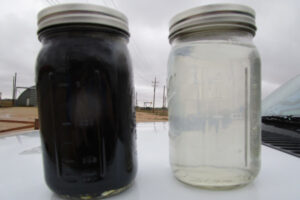Nanobubble Solutions to Reduce Costs and Save the Planet
What if a wastewater treatment and oil recovery solution were eco-friendly and cost-effective? What if produced water could be cleaned well enough that it became reusable? Our industry-leading nanobubble technology is a low-energy, chemical-free answer to issues faced by many industries, especially municipal wastewater and oil and gas. The scalable solution effectively cleans shallow lagoons, recycles produced water and increases oil production.
Think our solution could help your company thrive? Contact us today to get started with our innovative nanobubble technology that’s radically changing major industries around the globe.




